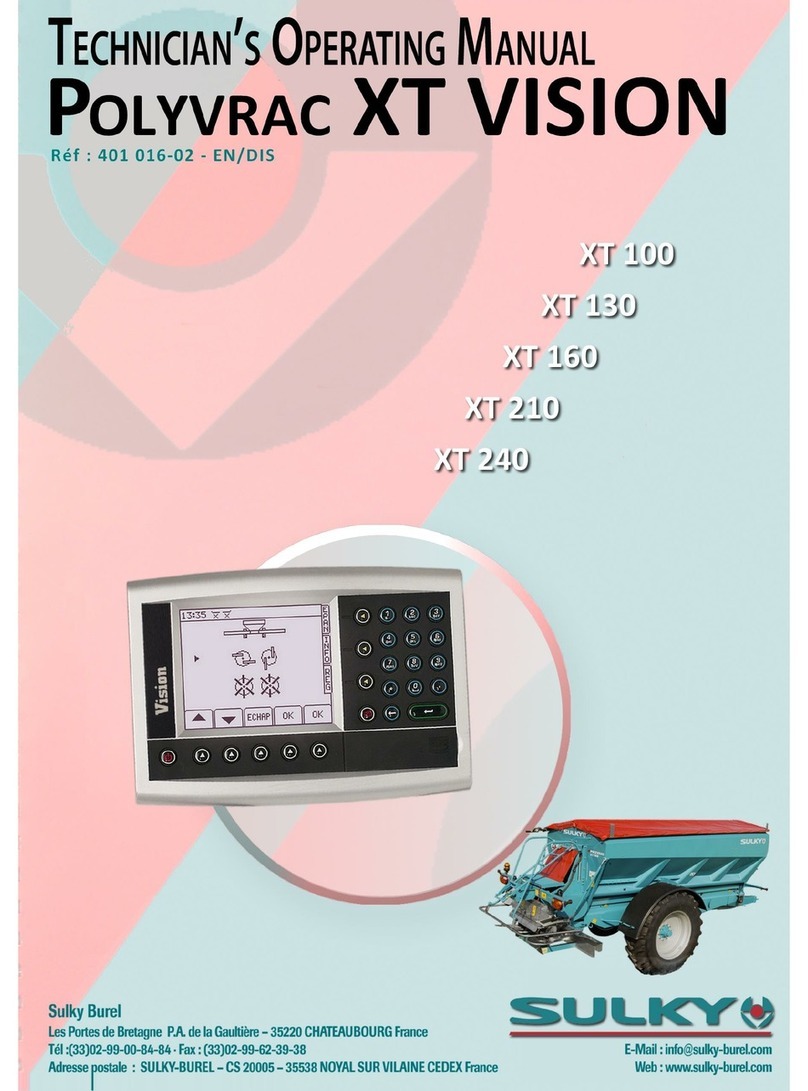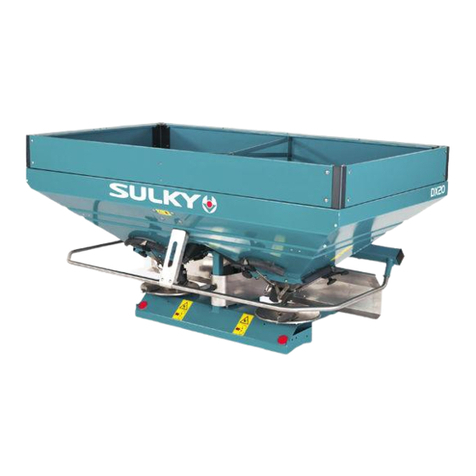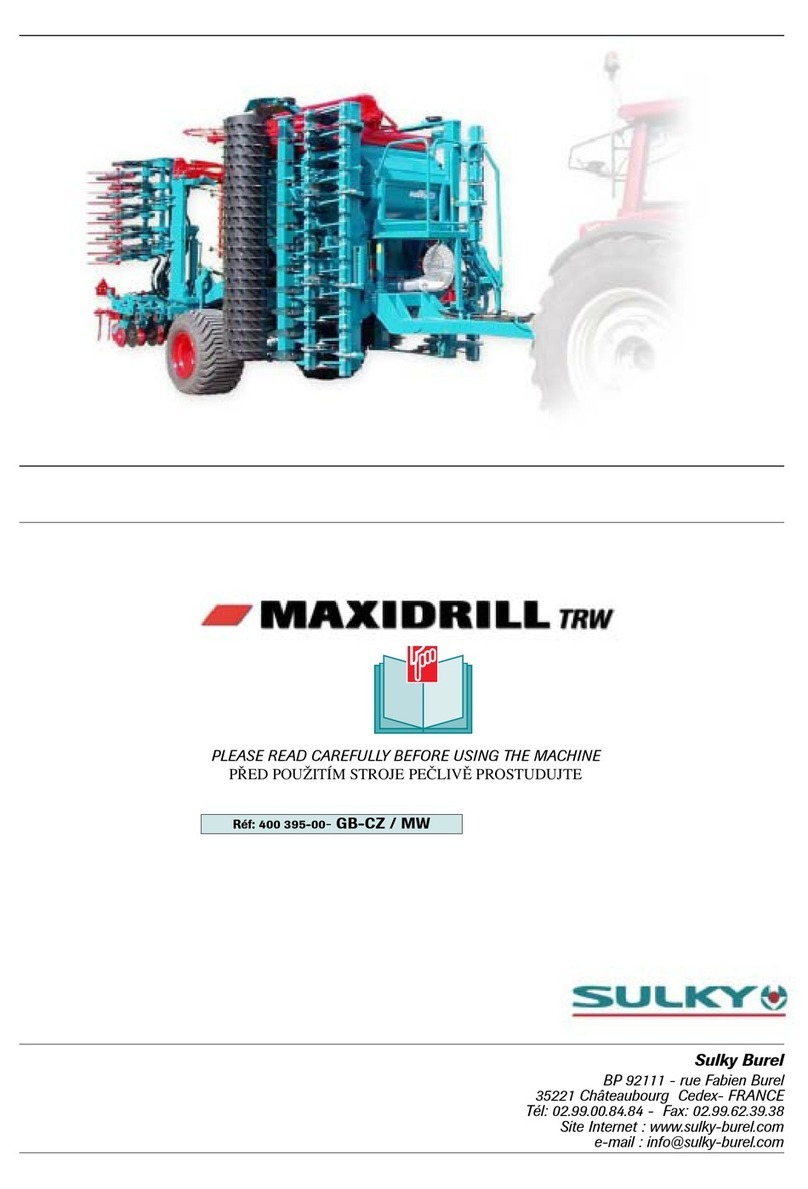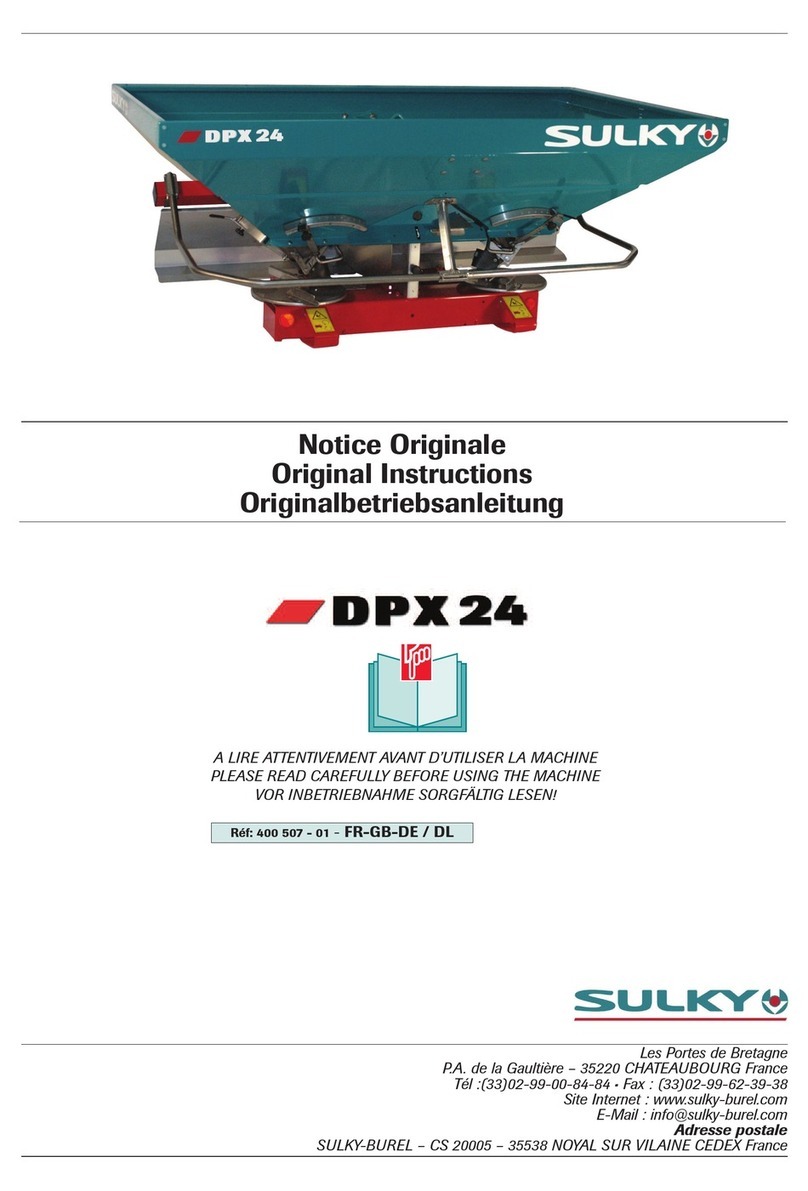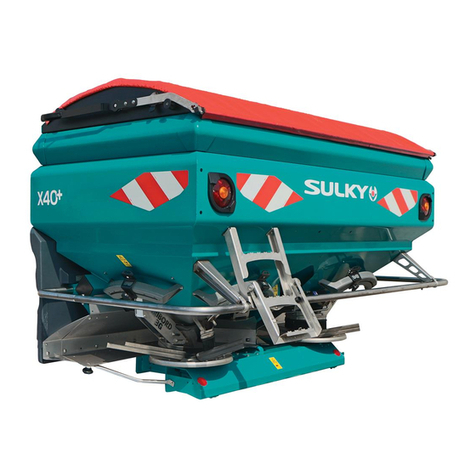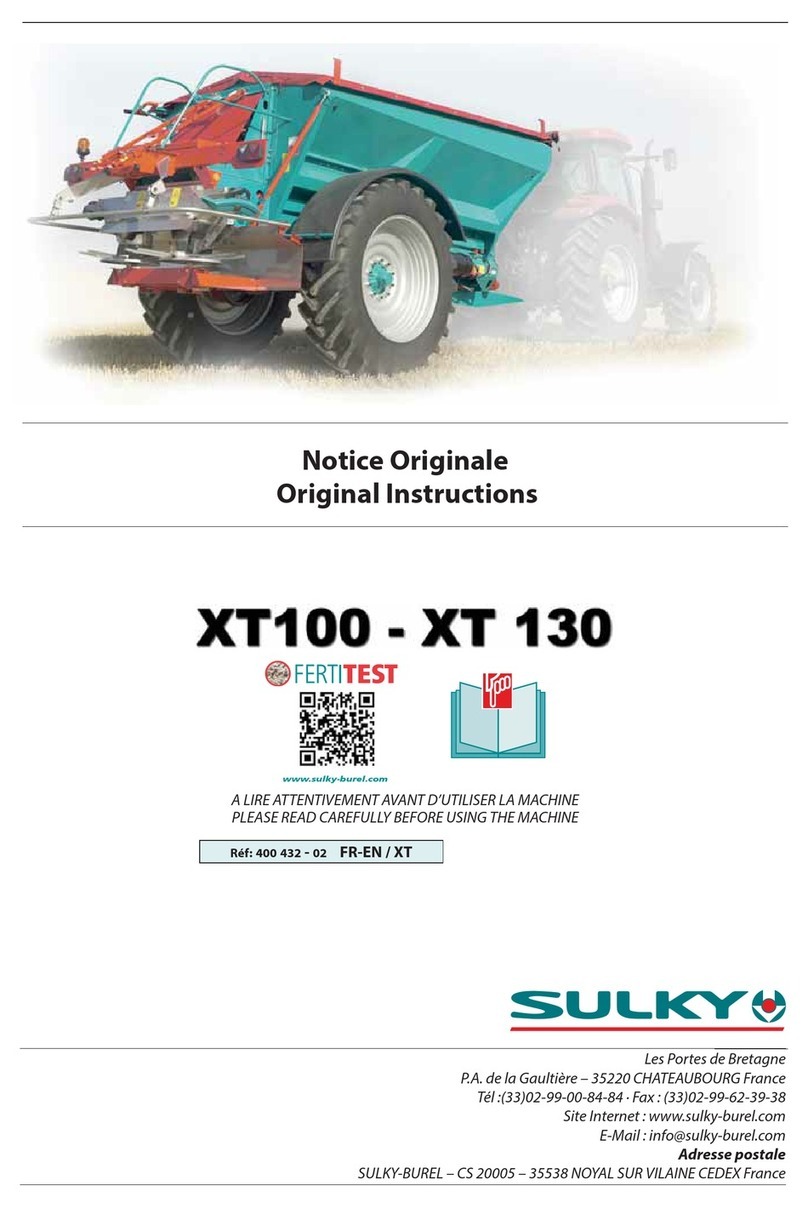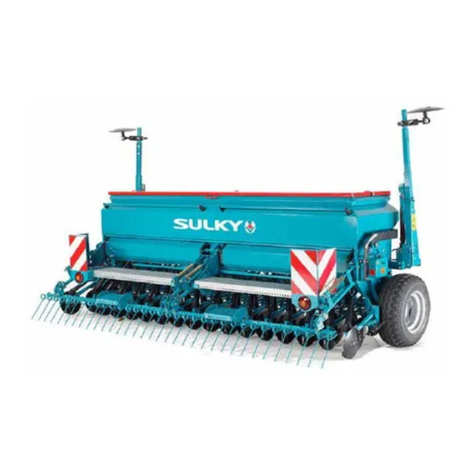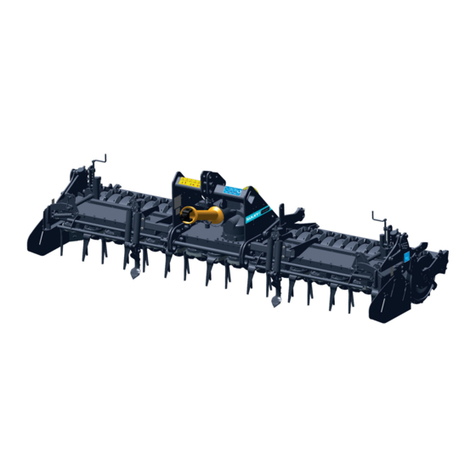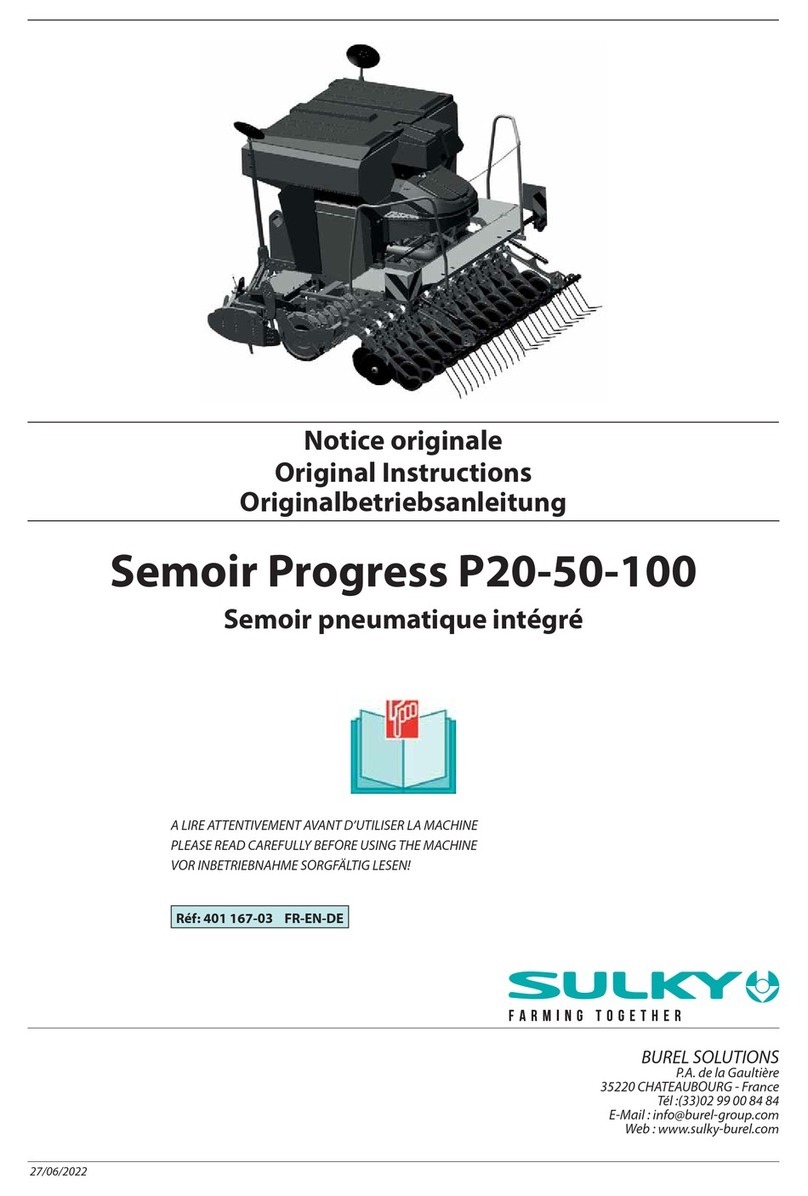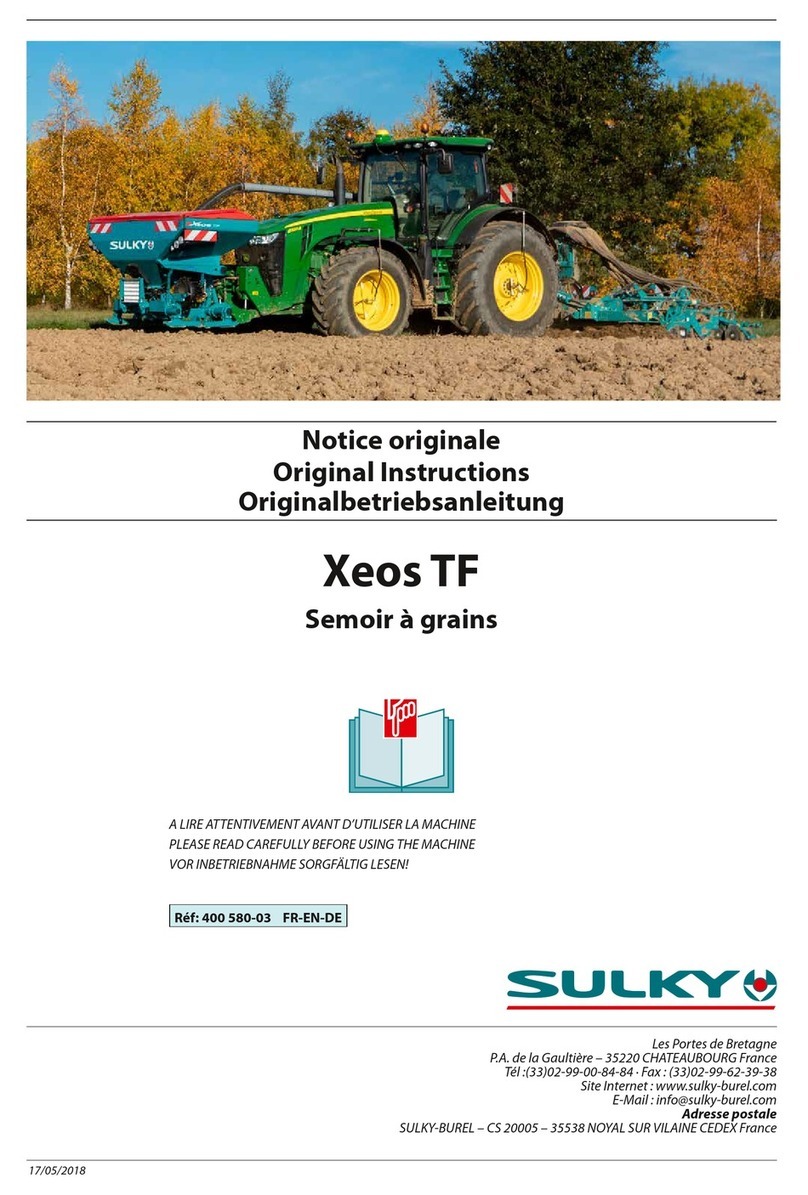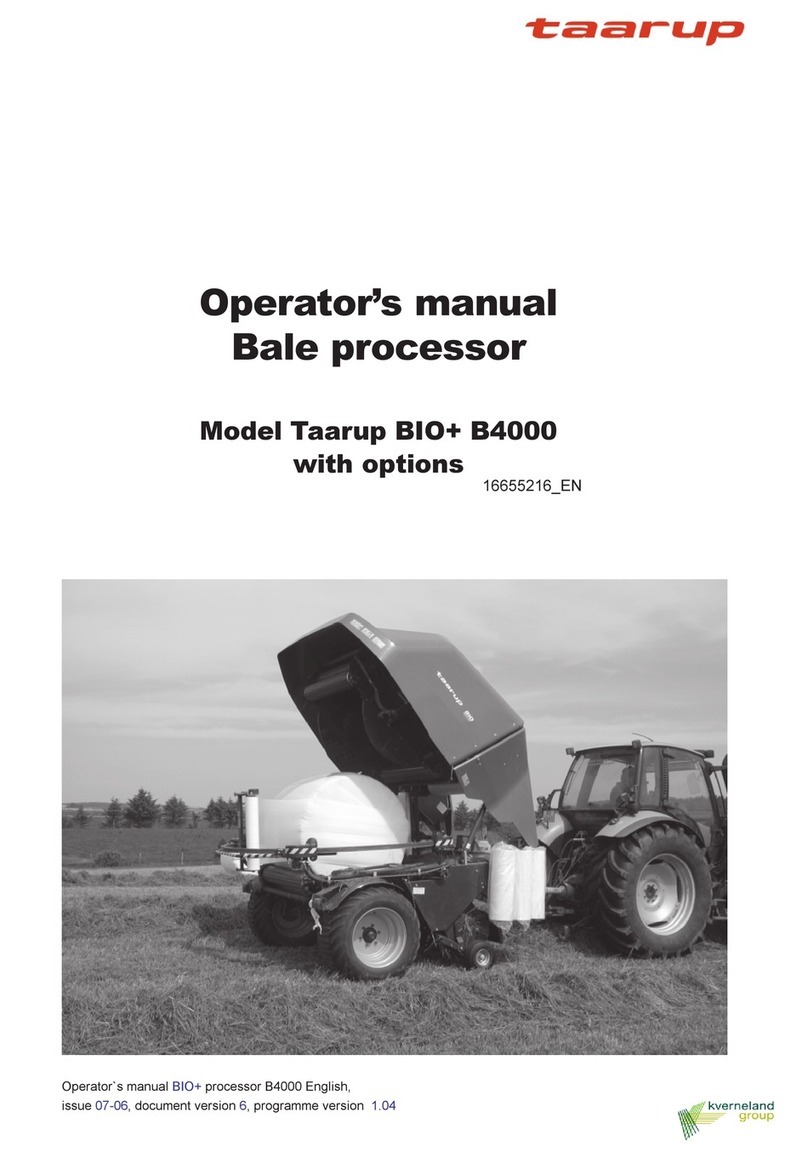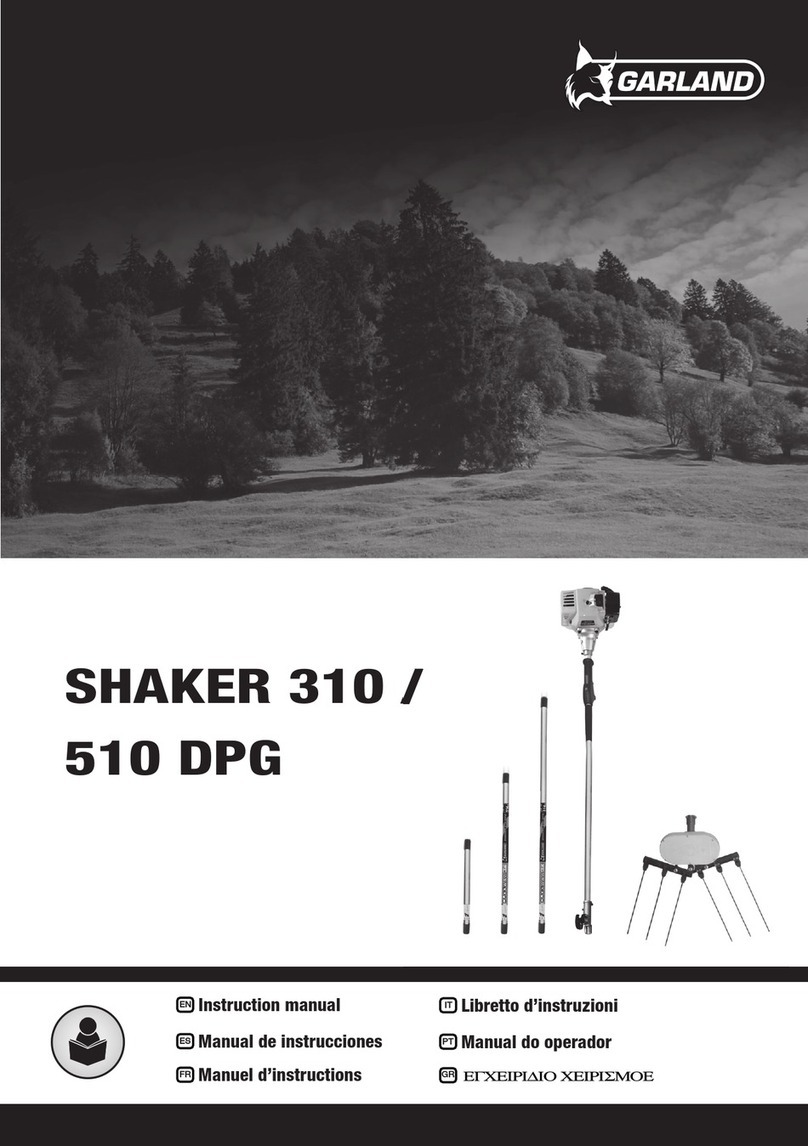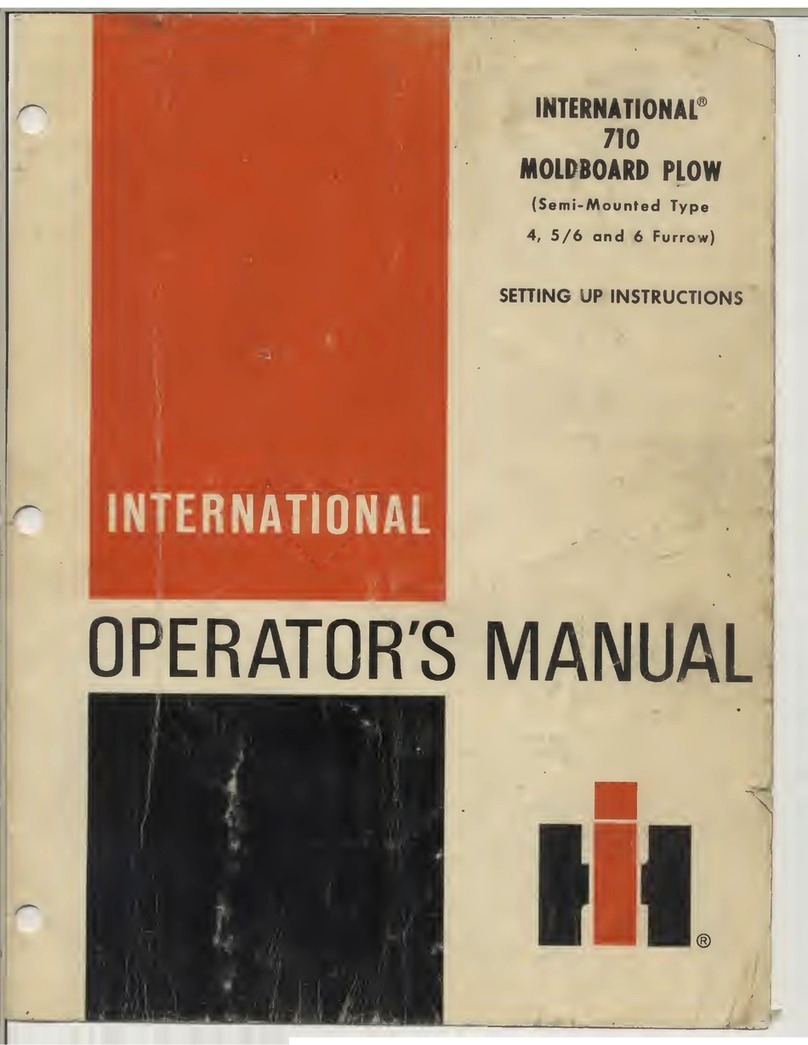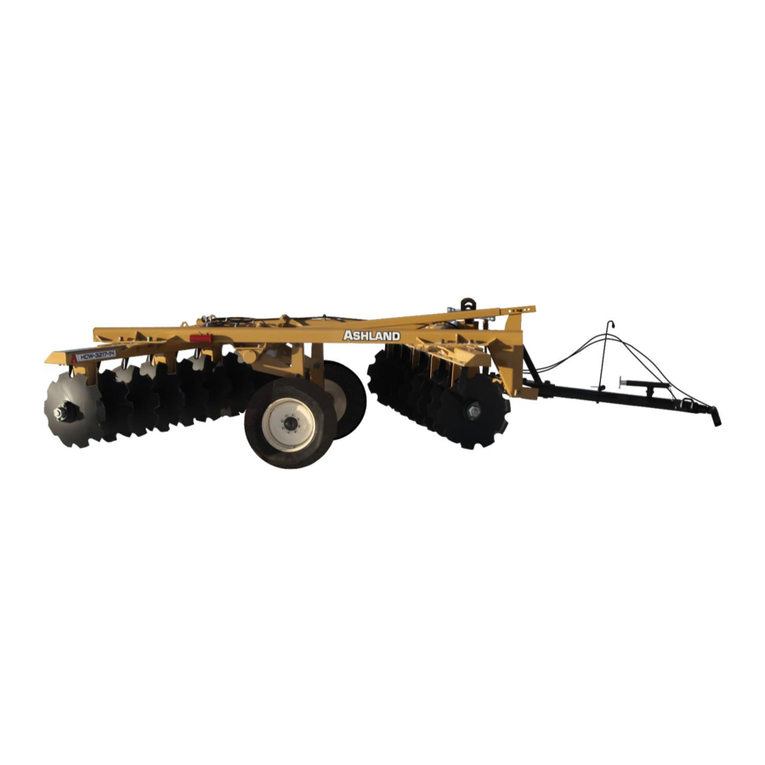
ჀCes symboles sont utilisés dans cette notice chaque fois que des recommandations concernent votre sécurité, celle d’autrui ou le bon fonctionnement
de la machine.
ჀTransmettez impérativement ces recommandations à tout utilisateur de la machine.
Danger pièces
en mouvement ne
pas s’approcher
Attention charge utile
à ne pas dépasser
Risque
d’endommager
la machine
Risque d’accident Faciliter le travail
Risque
d’endommagement
de la machine
consulter la notice
Danger de chute. Ne
pas monter sur la
machine.
Prescriptions de sécurité
PRESCRIPTIONS GÉNÉRALES DE SÉCURITÉ
Avant chaque utilisation et mise en service de
l’ensemble tracteur-machine, s’assurer de sa
conformité avec la réglementation en matière de
sécurité du travail et avec les dispositions du Code
de la Route.
GÉNÉRALITÉS
1 - Respecter, en plus des instructions contenues
dans cette notice, la législation relative aux
prescriptions de sécurité et de prévention des
accidents.
2 - Les avertissements apposés sur la machine
fournissent des indications sur les mesures de
sécurité à observer et contribuent à éviter les
accidents.
3 - Lors de la circulation sur la voie publique,
respecter les prescriptions du Code de la Route.
4 - Avant de commencer le travail, l’utilisateur devra
se familiariser obligatoirement avec les organes de
commande et de manœuvre de la machine et leurs
fonctions respectives. En cours de travail, il sera trop
tard pour le faire.
5 - L’utilisateur doit éviter de porter des vêtements
ottants qui risqueraient d’être happés par des
éléments en mouvement.
6 - Il est recommandé d’utiliser un tracteur équipé
d’une cabine ou d’un arceau de sécurité, aux normes
en vigueur.
7 - Avant la mise en route de la machine et le
démarrage des travaux, contrôler les abords
immédiats (enfant !).
Veiller à avoir une visibilité susante ! Eloigner toute
personne ou animal de la zone de danger de la
machine (projections !).
8 - Le transport de personnes ou d’animaux sur la
machine lors du travail ou lors des déplacements est
strictement interdit.
9 - L’accouplement de la machine au tracteur ne doit
se faire que sur les points d’attelage prévus à cet eet
conformément aux normes de sécurité en vigueur.
10 - La prudence est de rigueur lors de l’attelage de la
machine au tracteur et lors de son désaccouplement!
11 - Avant d’atteler la machine, il conviendra de
s’assurer que le lestage de l’essieu avant du tracteur
est susant. La mise en place des masses de lestage
doit se faire sur les supports prévus à cet eet
conformément aux prescriptions du constructeur du
tracteur.
12 - Respecter la charge à l’essieu maximum et le
poids total roulant autorisé en charge.
13 - Respecter le gabarit maximum sur la voie
publique.
14 - Avant de s’engager sur la voie publique, veiller
à la mise en place et au bon fonctionnement des
protecteurs et dispositifs de signalisation (lumineux,
rééchissants…) exigés par la loi. Remplacer
les ampoules grillées par des types et couleurs
identiques.
15 - Toutes les commandes à distance (corde,
câble, tringle, exible…) doivent être positionnées
de telle sorte qu’elles ne puissent déclencher
accidentellement une manœuvre génératrice de
risque d’accident ou de dégâts.
16 - Avant de s’engager sur la voie publique, placer
la machine en position de transport, conformément
aux indications du constructeur.
17 - Ne jamais quitter le poste de conduite lorsque le
tracteur est en marche.
18 - La vitesse et le mode de conduite doivent
toujours être adaptés aux terrains, routes et
chemins. En toute circonstance, éviter les brusques
changements de direction.
19 - La précision de la direction, l’adhérence du
tracteur, la tenue de route et l’ecacité des dispositifs
de freinage sont inuencées par des facteurs tels
que : poids et nature de la machine attelée, lestage
de l’essieu avant, état du terrain ou de la chaussée. Il
est donc impératif de veiller au respect des règles de
prudence dictées par chaque situation.
20 - Redoubler de prudence dans les virages en
tenant compte du porte-à-faux, de la longueur, de la
hauteur et du poids de la machine ou de la remorque
attelée.
21 - Avant toute utilisation de la machine, s’assurer
que tous les dispositifs de protection sont en place et
en bon état. Les protecteurs endommagés doivent
être immédiatement remplacés.
22 - Avant chaque utilisation de la machine,
contrôler le serrage des vis et des écrous, en
particulier de ceux qui xent les outils (disques,
palettes, déecteurs…). Resserrer si nécessaire.
23 - Ne pas stationner dans la zone de manœuvre de
la machine.
24 - Attention ! Des zones d’écrasement et de
cisaillement peuvent exister sur les organes
commandés à distance, notamment ceux asservis
hydrauliquement.
25 - Avant de descendre du tracteur, ou
préalablement à toute intervention sur la machine,
couper le moteur, retirer la clé de contact et attendre
l’arrêt complet de toutes les pièces en mouvement.
26 - Ne pas stationner entre le tracteur et la machine
sans avoir préalablement serré le frein de parcage et/
ou avoir placé des cales sous les roues.
27 - Avant toute intervention sur la machine,
s’assurer que celle-ci ne puisse être mise en route
accidentellement.
28 - Ne pas utiliser l’anneau de levage pour lever la
machine lorsqu’elle est remplie.
UTILISATION CONFORME DE LA MACHINE
Le Semoir ne doit être utilisé que pour les travaux
pour lesquels il a été conçu.
En cas de dommage lié à l’utilisation de la machine
hors du cadre des applications spéciées par le
constructeur, la responsabilité de celui-ci sera
entièrement dégagée.
Toute extrapolation de la destination d’origine de la
machine se fera aux risques et périls de l’utilisateur.
L’utilisation conforme de la machine implique
également :
- Le respect des prescriptions d’utilisation, d’entretien
et de maintenance édictées par le constructeur,
- L’utilisation exclusive de pièces de rechange,
d’équipements et d’accessoires d’origine ou
préconisés par le constructeur.
Le Semoir ne doit être utilisé, entretenu et réparé
que par des personnes compétentes, familiarisées
avec les caractéristiques et modes d’utilisation de la
machine. Ces personnes doivent aussi être informées
des dangers auxquels elles pourraient être exposées.
L’utilisateur est tenu au respect scrupuleux de la
réglementation en vigueur en matière de :
- Prévention contre les accidents,
- Sécurité du travail (Code du Travail),
- Circulation sur la voie publique (Code de la Route).
- Il lui est fait obligation d’observer strictement les
avertissements apposés sur la machine.
- Toute modication de la machine eectuée par
l’utilisateur lui-même ou toute autre personne, sans
l’accord écrit préalable du constructeur engagera la
responsabilité du propriétaire du matériel modié.
responsabilité du propriétaire du matériel modié.
- La valeur d’émission de bruit mesurée au poste
de conduite cabine fermée. (Niveau de pression
acoustique) est de 75 dB(A)
Appareil de mesure : SL 401
Position du microphone positionné selon le
paragraphe B.2.6 de l’annexe B de la NF EN ISO
4254-1.
Ce niveau de pression acoustique dépend, pour
l’essentiel, du tracteur utilisé.
ATTELAGE
1 - Lors de l’attelage de la machine au tracteur ou de
sa dépose, placer le levier de commande du relevage
hydraulique dans une position telle que toute entrée
en action du relevage ne puisse intervenir de façon
inopinée.
2 - Lors de l’attelage de la machine au relevage 3
points du tracteur, veiller à ce que les diamètres
des broches ou tourillons correspondent bien aux
diamètres des rotules du tracteur.
3 - Attention ! Dans la zone de relevage 3 points, il
existe des risques d’écrasement et de cisaillement!
4 - Ne pas se tenir entre le tracteur et la machine lors
de la manœuvre du levier de commande extérieur
du relevage.
5 - Au transport la machine doit être stabilisée par
les tirants de rigidication du relevage pour éviter
tout ottement et débattement latéral.
6 - Lors du transport de la machine en position
relevée, verrouiller le levier de commande du
relevage.
7 - Ne jamais dételer la machine lorsque la trémie
3
FR
